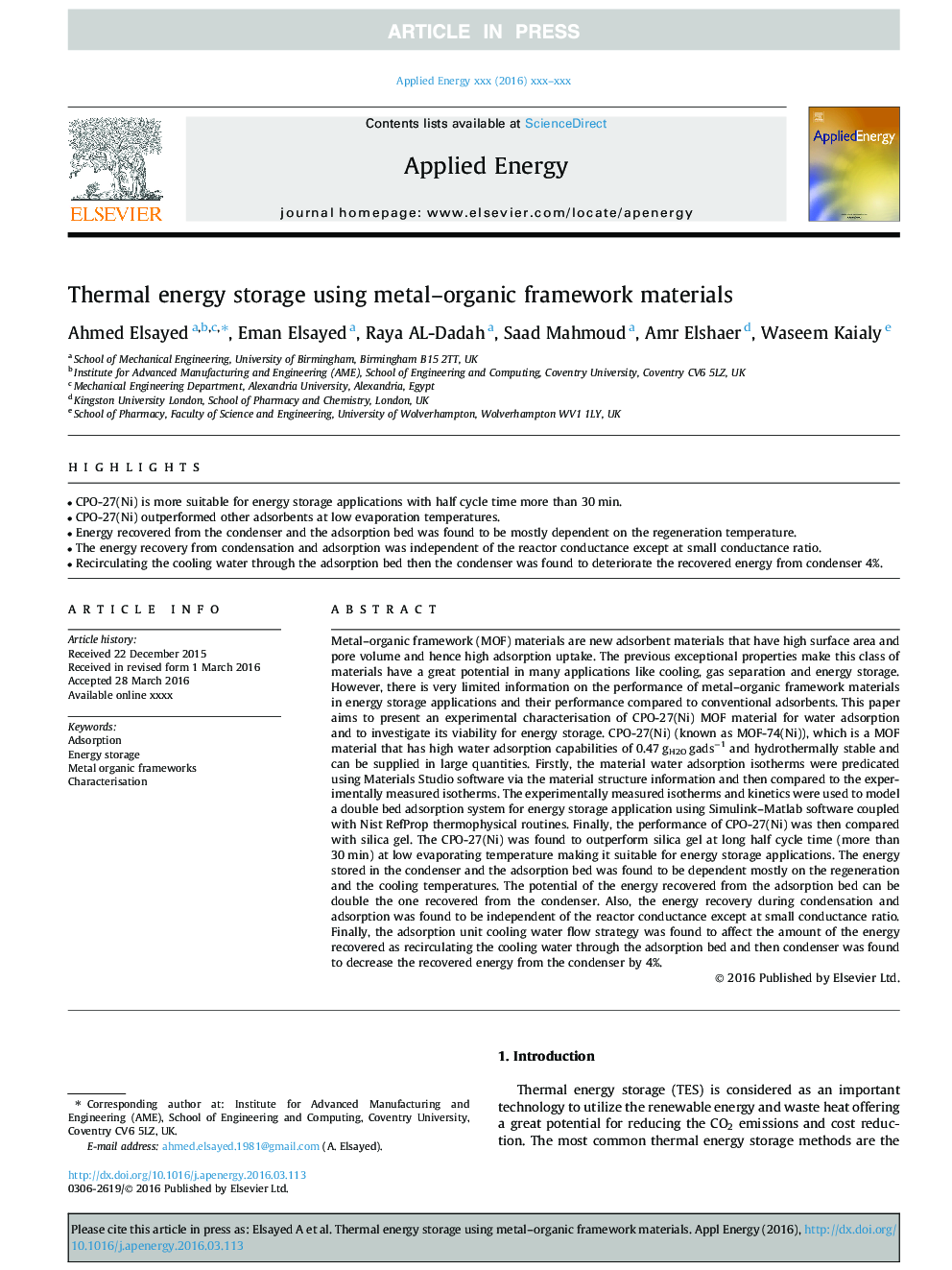| کد مقاله | کد نشریه | سال انتشار | مقاله انگلیسی | نسخه تمام متن |
|---|---|---|---|---|
| 4916816 | 1362735 | 2017 | 11 صفحه PDF | دانلود رایگان |
عنوان انگلیسی مقاله ISI
Thermal energy storage using metal-organic framework materials
ترجمه فارسی عنوان
ذخیره انرژی حرارتی با استفاده از مواد چار چوب فلزی
دانلود مقاله + سفارش ترجمه
دانلود مقاله ISI انگلیسی
رایگان برای ایرانیان
کلمات کلیدی
جذب، ذخیره انرژی، قاب های فلزی آلی، تعیین مشخصات،
موضوعات مرتبط
مهندسی و علوم پایه
مهندسی انرژی
مهندسی انرژی و فناوری های برق
چکیده انگلیسی
Metal-organic framework (MOF) materials are new adsorbent materials that have high surface area and pore volume and hence high adsorption uptake. The previous exceptional properties make this class of materials have a great potential in many applications like cooling, gas separation and energy storage. However, there is very limited information on the performance of metal-organic framework materials in energy storage applications and their performance compared to conventional adsorbents. This paper aims to present an experimental characterisation of CPO-27(Ni) MOF material for water adsorption and to investigate its viability for energy storage. CPO-27(Ni) (known as MOF-74(Ni)), which is a MOF material that has high water adsorption capabilities of 0.47Â gH2OÂ gadsâ1 and hydrothermally stable and can be supplied in large quantities. Firstly, the material water adsorption isotherms were predicated using Materials Studio software via the material structure information and then compared to the experimentally measured isotherms. The experimentally measured isotherms and kinetics were used to model a double bed adsorption system for energy storage application using Simulink-Matlab software coupled with Nist RefProp thermophysical routines. Finally, the performance of CPO-27(Ni) was then compared with silica gel. The CPO-27(Ni) was found to outperform silica gel at long half cycle time (more than 30Â min) at low evaporating temperature making it suitable for energy storage applications. The energy stored in the condenser and the adsorption bed was found to be dependent mostly on the regeneration and the cooling temperatures. The potential of the energy recovered from the adsorption bed can be double the one recovered from the condenser. Also, the energy recovery during condensation and adsorption was found to be independent of the reactor conductance except at small conductance ratio. Finally, the adsorption unit cooling water flow strategy was found to affect the amount of the energy recovered as recirculating the cooling water through the adsorption bed and then condenser was found to decrease the recovered energy from the condenser by 4%.
ناشر
Database: Elsevier - ScienceDirect (ساینس دایرکت)
Journal: Applied Energy - Volume 186, Part 3, 15 January 2017, Pages 509-519
Journal: Applied Energy - Volume 186, Part 3, 15 January 2017, Pages 509-519
نویسندگان
Ahmed Elsayed, Eman Elsayed, Raya AL-Dadah, Saad Mahmoud, Amr Elshaer, Waseem Kaialy,
